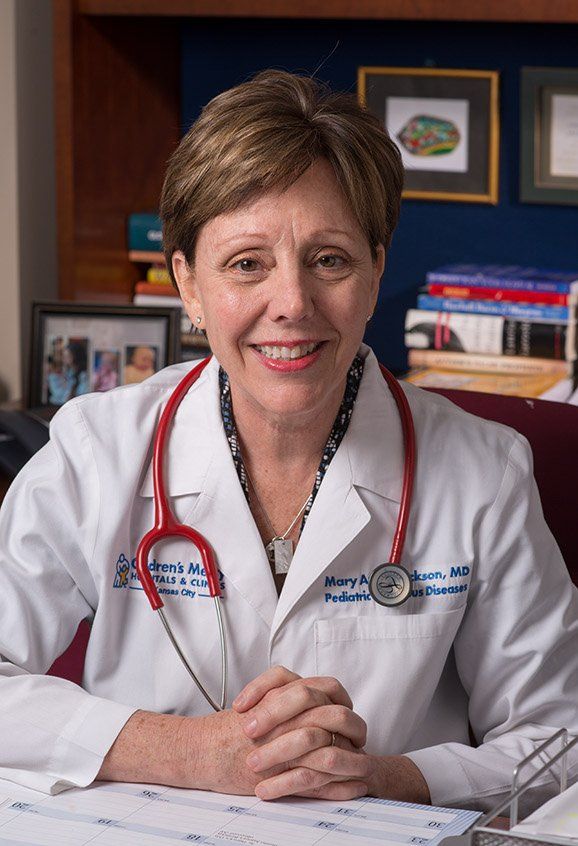Lymph nodes: Dissecting the problem to find a treatment
Lymph node enlargement is common in children. Focused assessment and quick diagnosis of cause are key to ensure proper treatment.
Mary Anne Jackson, MD, FAAP

A swollen lymph gland can be a common complaint in pediatric care, but the diagnostic approach to identify cause is key to treatment, says Mary Anne Jackson, MD, FAAP.
Jackson, division director of Infectious Diseases, Children’s Mercy Hospital, Kansas City, Missouri, and professor of Pediatrics at the University of Missouri-Kansas City School of Medicine, Kansas City, outlined how to assess and properly diagnose lymphadenopathy to ensure proper treatment in a session titled “Lymphadenopathy: Approach to diagnosis and management” on November 6 at the American Academy of Pediatrics (AAP) 2018 National Conference and Exhibition in Orlando, Florida.
Jackson’s session provided an overview of common ages, common sites (head and neck), and sizes of enlarged lymph nodes. She says lymph node enlargement is often reactive and, when due to infection, management is predicated on whether a viral, bacterial, or atypical pathogen is suspected.
“When a child presents with an enlarged lymph node, a focused approach should ascertain whether fever or other systemic symptoms are present; include the examination findings that signal lymph node inflammation; and factor in the duration of time that a nodal mass has been present,” Jackson says, noting that an acute presentation is usually hours to days, subacute is 2 to 6 weeks, and chronic presentations are when the lymph nodes have been present more than 6 weeks. “Additionally, the consistency of the node should be considered because firm, rubbery, fixed, or matted nodes that are large are generally red flags that may require biopsy to exclude malignancy,” she says.
There are many causes of lymph node enlargement that Jackson discussed. In acute bacterial lymphadenitis, common pathogens include Staphylococcus aureus and group A Streptococcus, and she says treatment should be focused on antibiotics in these cases. Sometimes, however, patients with Kawasaki disease can have an inflamed lymph node in the neck as the first finding, and it can mimic bacterial lymphadenitis with additional specific features that should be considered.
Subacute presentations of lymphadenitis that are also common may be caused by nontuberculous mycobacteria (NTM), Jackson says, and occur most often in toddlers. In those with cat or kitten exposure, Bartonella, also known as cat scratch disease, should be considered. Bartonellosis occurs more often in older children, and diagnosis should be straightforward for each if practitioners recognize the important epidemiology, common presentation, and findings, Jackson says. Subacute cases call for different diagnostic and treatment strategies than bacterial cases that are generally cured with antibiotics and drainage if abscess occurs, with surgical excision offering a curative treatment in NTM cases, and lymph node drainage needed in some cases for pain relief in bartonellosis.
There are also some less common causes of lymph node inflammation that Jackson discussed at the session, including tick-borne tularemia that manifests with lymph node or glandular and ulceroglandular presentations.
“While childhood malignancy may be heralded by lymph node enlargement, the diagnosis of leukemia or lymphoma is uncommon but can be suspected based on certain features, such as the situation when a teenager presents with supraclavicular adenopathy,” Jackson says. “The clinician should recognize Epstein-Barr virus-associated generalized lymphadenopathy, but also know that other pathogens-including human immunodeficiency virus (HIV)-should be considered in the differential.”
Jackson says she hopes clinicians will take the diagnostic clues she provided back to practice-most importantly, location, location, location. She says she also hopes that clinicians will have a better understanding of diagnostic testing, understand the pathogens that cause lymph node swelling, and know when it’s time for a biopsy.
Jackson also led a session highlighting vaccine changes on November 5 at the conference titled “Vaccine update: What’s new and what’s changed.”
The session addressed how to interpret polio vaccine records in immigrant children; recognizing the implications for vaccines if a newborn has been exposed to biologic response modifier therapy; the measles/mumps/rubella (MMR) vaccine and recent measles and mumps outbreaks and implications for practitioners; how to prevent common administrative errors; an update on the flu and why inactivated influenza vaccine (IIV) is preferred over live-attenuated influenza vccine (LAIV); the human papillomavirus (HPV) vaccine; promoting maternal vaccines; and more.